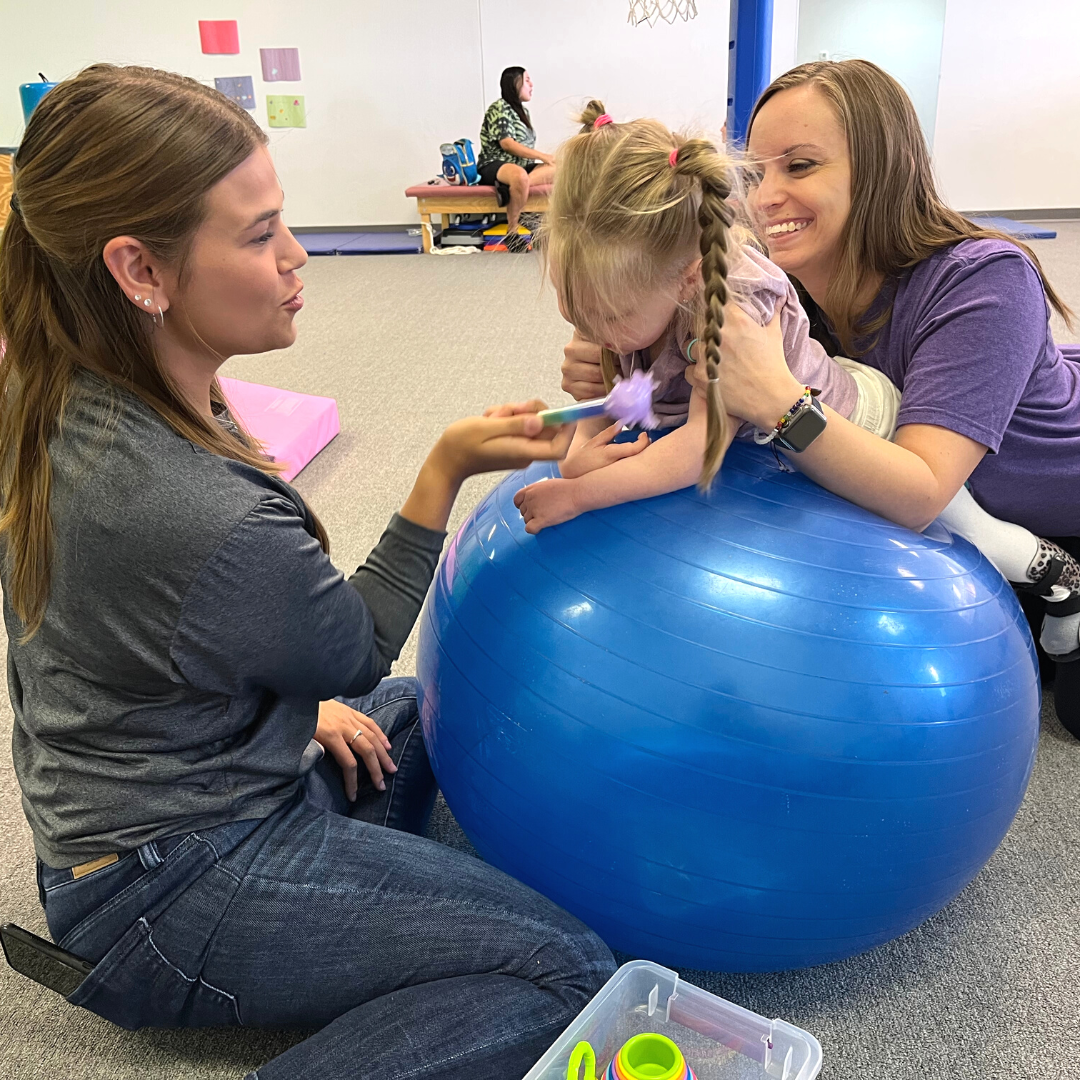We understand that starting any pediatric therapy at Kids Place is challenging and slightly intimidating. Parents and children alike are nervous. This is normal – and ok! To better prepare you for your first visit, let’s talk more about what you can expect at your first pediatric therapy session.
What to Expect at my Child’s First Pediatric Physical Therapy Session
First, your therapist will begin with a conversation with you and your child. During this portion, we will ask background information such as medical history, current medical conditions, timelines for meeting gross motor skills like sitting, crawling and walking as well as any other important information. This is all done to better understand the current concerns the pediatrician and you may have. Be prepared to answer a lot of questions and be as transparent as possible! We all want what is best for your child, and this information is vital to developing the best plan of care for your child.
Here is a list of questions that your therapist might ask:
- Who are the primary caregivers for the child?
- Did your child have any complications when being born?
- Are there any recent hospitalization/fracture/surgeries?
- Did your child meet all their gross motor skills and if so, when?
- Is your child in pain and where is the pain located?
- When did you start noticing these symptoms?
- What are some exercises that you have been doing to help your child?
- Does your child go to school/daycare?
After your physical therapist receives all this information based, we will begin to build rapport with your child. Your physical therapist and child will engage in toys and converse to make sure your child feels comfortable. During play, we will observe your child’s movements such as sitting, standing, playing, and running. Other skills we observe during an evaluation include:
- Balance
- Coordination
- Sitting posture
- Standing posture
- Stair navigation
- Running
- Jumping
- Skipping/galloping
- Range of motion of all joints
- Strength testing
- Strength and range of motion asymmetries
- Getting up from the ground
- All developmental positions(laying on back, laying on stomach, laying on side-usually performed with babies)
- Rolling and other transitions performed (usually for babies)
Physical therapists may also use standardized tests at the evaluation to help observe any other deficits. These standardized tests are also useful in comparing their skills to age matched peers.
Once we have observed skills and interacted with both you and your child, we will develop a treatment plan for your child geared to assist your child in meeting age-appropriate skills. Keep in mind, Kids Place only employs licensed physical therapists. So, your evaluation and every follow-up session is performed by a licensed physical therapist, never an assistant or tech. This is important because if your child does not show all of their amazing skills at the evaluation, we adjust the goals and treatment plan in real-time while assessing ever session. Every 12 visits (or sooner when necessary), your physical therapist will perform a progress report. This progress report will demonstrate your child’s growth and progress since the evaluation. It is important to have a conversation with your physical therapist and be on the same page about the goals being set for your child to understand what is required to reach each goal.
At the evaluation, it is also important that you ask any questions necessary to have the best understand of the care your child will receive. We are here to discuss how to maximize the benefits of physical therapy, especially at home. It is important that parents follow through with your child’s home exercise program. Most importantly, pediatric therapy is a collaborative effort between your physical therapist, the parents, and the child, and communication is key!
https://www.ncbi.nlm.nih.gov/pmc/articles/PMC6531638/” Let’s make pediatric physical therapy a true evidence-based field! Can we count on you?”







